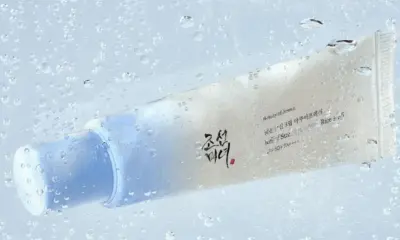Ingredients & Formulation
Mastering Zinc Oxide: Solving Formulation Challenges for Next-Level Sun Protection

Achieving Zinc Oxide Formulation Mastery: A Guide for High-Performance Sunscreens
Formulating sunscreens with zinc oxide (ZnO) requires both technical expertise and creativity. Mastery of this process is essential today.
Consumers now expect daily-use products with broad-spectrum protection and a smooth feel. That’s why Zinc Oxide Formulation Mastery is crucial.
This article explores format choices, processing methods, pH management, and stability optimization to help developers succeed with ZnO-based formulations.
Why Zinc Oxide Is a Preferred UV Filter
Broad-Spectrum, Photostable, and Globally Approved
Zinc oxide offers powerful protection against both UVA and UVB rays. It reflects, scatters, and absorbs harmful radiation efficiently.
ZnO remains stable under sunlight. This ensures long-lasting SPF and UVA performance in a wide range of cosmetic and skincare products.
Additionally, regulators worldwide recognize ZnO as a safe and effective inorganic sunscreen filter for various personal care applications.
Overcoming Formulation Challenges with ZnO
Managing Texture, Dispersibility, and Appearance
Despite its benefits, ZnO presents unique challenges in product formulation. Its density affects both texture and emulsion stability.
Without proper dispersion, ZnO can clump, reducing aesthetic appeal and decreasing sun protection factor (SPF) performance significantly.
To achieve Zinc Oxide Formulation Mastery, formulators must focus on particle distribution, processing precision, and phase compatibility.
Choosing the Right Format for Your Product
Oil-in-Water (O/W) Emulsions
O/W emulsions offer light, non-greasy textures. However, ZnO can disrupt pH balance and lead to instability in these systems.
To prevent issues, avoid ionic emulsifiers. Instead, use nonionic options like Cetearyl Alcohol with Coco-Glucoside or Glyceryl Stearate blends.
These emulsifiers support stable emulsions while preventing the clumping often caused by ionic emulsifier-ZnO interactions.
Water-in-Oil (W/O) Emulsions
W/O emulsions give a richer feel and stronger water resistance. However, they may thicken over time without careful emulsifier selection.
Recommended polymeric emulsifiers include PEG-30 Dipolyhydroxystearate and Polyglyceryl-3 Diisostearate at 1–3% w/w.
Anhydrous Systems
Anhydrous formulas skip water altogether, eliminating pH concerns. When designed as sticks, they offer great feel and application.
To avoid sedimentation, add suspending agents that match your ZnO particle type. This prevents agglomeration and supports even SPF.
Processing Best Practices for ZnO
Dispersing ZnO Effectively
Proper dispersion is essential to avoid agglomeration. You can use ZnO in powder form or as a pre-dispersed ingredient.
If using powder, create a pre-dispersion with a carrier fluid and dispersants before adding ZnO under high shear mixing.
Use around 0.1% polyhydroxystearic acid per 1% ZnO for even distribution. Wetting agents like glycerin improve this process.
Working with Pre-Dispersed ZnO
Pre-dispersed ZnO simplifies production and ensures consistency. It reduces steps and avoids processing errors common with raw powders.
Both methods offer benefits. Choose based on your desired efficiency, aesthetic outcome, and formulation format.
Particle Size and Coating Matter
Improving Transparency and Reducing Whitening
Particle size influences how much white cast appears on the skin. Smaller or platelet-shaped ZnO particles reduce visible reflectance.
This enhances transparency and creates a more cosmetically elegant finish—especially in facial products and tinted sunscreens.
Surface Coatings Enhance Compatibility
Surface coatings like silica, alumina, or stearic acid improve ZnO dispersion and prevent ion migration. This supports overall stability.
These coatings also expand your emollient choices and can reduce viscosity in final formulations, especially in fluid sunscreens.
For Zinc Oxide Formulation Mastery, understanding coatings and their interaction with other ingredients is essential.
Optimizing pH for Stability and Performance
Maintaining Ideal pH Between 7.0 and 7.5
ZnO prefers a neutral pH. Below 7.0, zinc ions form and dissolve the ZnO. Above 7.5, complex ions may destabilize the formula.
Use lactic or citric acid to adjust pH to 7.0–7.5. Monitor pH changes over time for long-term product consistency.
Chelating agents like disodium EDTA (0.1–0.2% w/w) help reduce zinc ion migration and support a stable emulsion.
Avoid excessive acrylates, which react poorly with ZnO. These may lead to texture issues like cottage cheese-like separation.
Testing Techniques to Ensure Stability
Spatula Test for Visual Texture
Spread your formula on a spatula. A smooth, glossy finish means stable dispersion. Dull or grainy textures suggest ZnO agglomeration.
Microscopy for Particle Distribution
Microscopic analysis can detect early-stage agglomeration. It helps you fine-tune particle dispersion and emulsion structure quickly.
Drawdown Cards for Whitening Assessment
Drawdown cards highlight product performance. A grainy look signals potential problems with ZnO interaction or incomplete dispersion.
These quick tests prevent future SPF and aesthetic issues by identifying instability early in the formulation process.
Mastering Zinc Oxide for the Future of Sunscreen Innovation
Zinc oxide continues to evolve as a hero ingredient in sun care. It delivers safety, stability, and strong UV protection.
To unlock its full potential, brands must embrace Zinc Oxide Formulation Mastery. This includes understanding processing, pH, and particle science.
By doing so, developers can meet global regulations and user expectations with every launch—balancing elegance with protection.
Whether you’re crafting a moisturizer with SPF or a beach-grade sunscreen, mastery of ZnO will define product success moving forward.
Explore More Breakthroughs in Formulation
Want the latest updates in sunscreen innovation and Zinc Oxide Formulation Mastery? Explore more news on this website





















